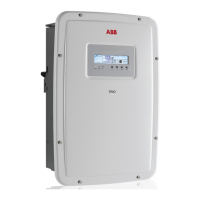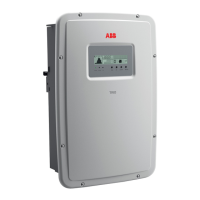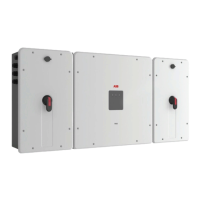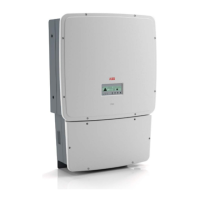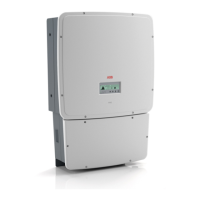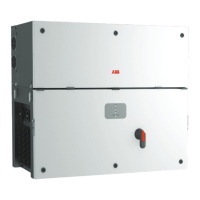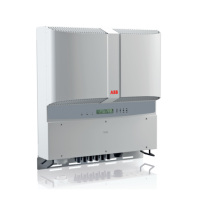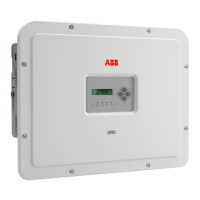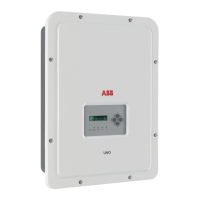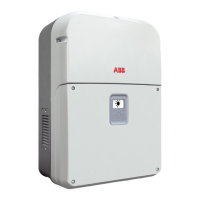Checking of strings voltage
Measure the voltage present between positive and negative pole of each
string.
If the open circuit voltage of the string is near the maximum value ac-
cepted by the inverter, consider that low ambient temperatures cause an
increase in the string voltage (different according to the photovoltaic mo-
dule used). In this case it is necessary to carry out a check of the sizing of
the system and/or a check on the connections of the modules of the sy-
stem (e.g.: number of modules in series higher than the design number).
Input voltages higher than the maximum value accepted by the inverter (see technical data
table) may occur the damage of the inverter.
Checking the correct polarity of the strings (standard / -S versions)
Before wiring the strings for the Standard and -S versions, you must
ensure that the voltage of each string complies with the correct polarity
using a voltmeter.
Selection of differential protection downstream of the inverter
All ABB string inverters marketed in Europe are equipped with a device
for protection against ground faults in accordance with the safety stan-
dard IEC 62109-2, please refer to sections 4.8.2 and 4.8.3 of the Stan-
dard (equivalent to Standard DIN V VDE V 0126-1:2006, section 4.7). In
particular, ABB inverters are equipped with a redundancy on the reading
of the ground leakage current sensitive to all components of both direct
and alternating current. Measurement of the ground leakage current is
carried out at the same time and independently by 2 different processors:
it is sufcient for one of the two to detect an anomaly to trip the protection,
with consequent disconnection from the grid and stopping of the conver-
sion process.
There is an absolute threshold of 500 mA of total leakage current AC+DC
with protection tripping time at a max. of 300 msec.
Furthermore, there are another three tripping levels with thresholds re-
spectively at 30 mA, 60 mA and 150 mA to cover the “rapid” changes
in fault current induced by accidental contact with leaking live parts. The
max. tripping times are progressively shortened as the speed of change
in the fault current increases and, starting from the 300 msec/max for
the 30 mA change, they are shortened respectively to 150 msec and 40
msec for 60 mA and 150 mA changes.
It should in any case be noted that the integrated device only protects the
system against ground faults that occur upstream of the AC terminals of
the inverter (namely towards the DC side of the photovoltaic system and
consequently towards the photovoltaic modules). The leakage currents
that can occur in the AC section between the draw/feed in point and the
inverter are not detected and require an external protection device.
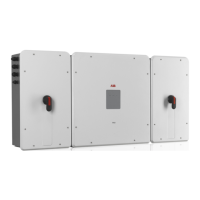
